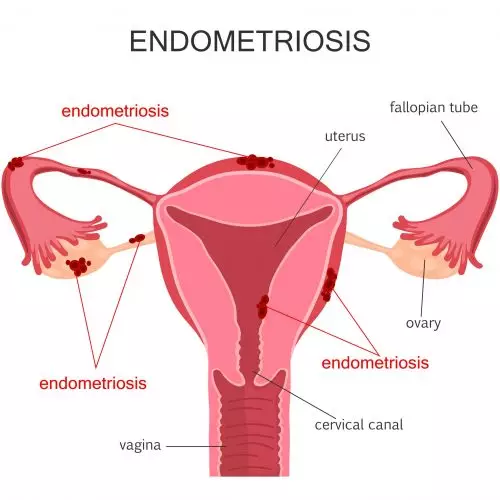Fibroids vs. Endometriosis
Uterine fibroids and endometriosis are both conditions of the female reproductive system, affecting the pelvic and abdominal areas. While research shows that they share genetic origins, and a number of potentially painful and disruptive symptoms, fibroids and endometriosis are separate clinical issues requiring different approaches. Understanding the similarities and differences between these conditions enables you to:
- Communicate more clearly with your healthcare provider,
- Obtain appropriate treatment, and
- Enjoy faster symptom relief.
Symptom overlap between fibroids and endometriosis
Both fibroids and endometriosis can be asymptomatic, but women with these conditions can also experience a variety of symptoms ranging from mild to severe. Some overlapping symptoms between fibroids and endometriosis can include:
- Sharp pelvic and/or abdominal pain
- Pelvic pressure
- Painful sexual intercourse
- Heavy and/or prolonged periods
- Bleeding between periods
- Fatigue
- Urinary and/or bowel issues
- Difficulty getting pregnant
Basic differences between fibroids and endometriosis
Both fibroids and endometriosis have been linked to estrogen imbalance, and involve abnormal tissue growth. However:
- Fibroids are dense, benign tumors made of smooth muscle and fibrous connective tissue. They can grow inside your uterine cavity (womb), inside the muscular uterine wall, or on the outside surface of the uterus. Fibroids can grow to various sizes, and appear singly, spread apart, or in clusters.
- Endometriosis is when tissue similar to the inner lining of the uterus starts growing outside of your uterus—spreading and attaching to other organs such as the bladder, fallopian tubes, ovaries, intestines, and sometimes even the lungs. This web of tissue can pull and twist the organs it encounters.


Different causes of fibroids and endometriosis
Experts are not sure what the definitive causes of fibroids and endometriosis are, but there are research-based theories regarding both.
Fibroid development and growth have been linked to risk factors such as:
- Estrogen and progesterone hormone imbalance
- Vitamin D deficiency
- Frequent consumption of red meat, alcohol, and/or caffeine
- High body mass index (BMI)
- Black race
- Early menarche (first period)
Theories concerning the cause of endometriosis, on the other hand, include:
- Endometrial tissues being transported via blood or lymphatic fluid to other areas of the body
- Endometrial cells attaching to areas outside your uterus after a C-section, hysterectomy, or other surgical procedure involving the uterus
- An event called reverse menstruation, in which endometrial tissue enters your fallopian tubes and abdomen instead of leaving your body during your period
- Cells outside the uterus transforming into endometrial cells
How do diagnosis and treatment of fibroids and endometriosis differ?
While treatment options for both conditions are similar, recommended treatments may depend on your situation, priorities, and goals.
Treatment options for fibroids include:
- Medications, either over-the-counter (OTC) or prescription, for pain relief
- Hormone therapy to reduce bleeding and shrink fibroids
- Minimally-invasive procedures such as uterine fibroid embolization (UFE) and MRI-guided focused ultrasound (MRgFUS)
- Surgery, including myomectomy (removal of fibroids) and hysterectomy (removal of the uterus)
Treatment options for endometriosis may include:
- Medications to alleviate pain
- Hormone therapy to slow the growth of the endometrial tissue
- Laparoscopic surgery, to remove the web of tissue
Work closely with your healthcare provider to find the most appropriate treatment for your diagnosis and unique situation.


